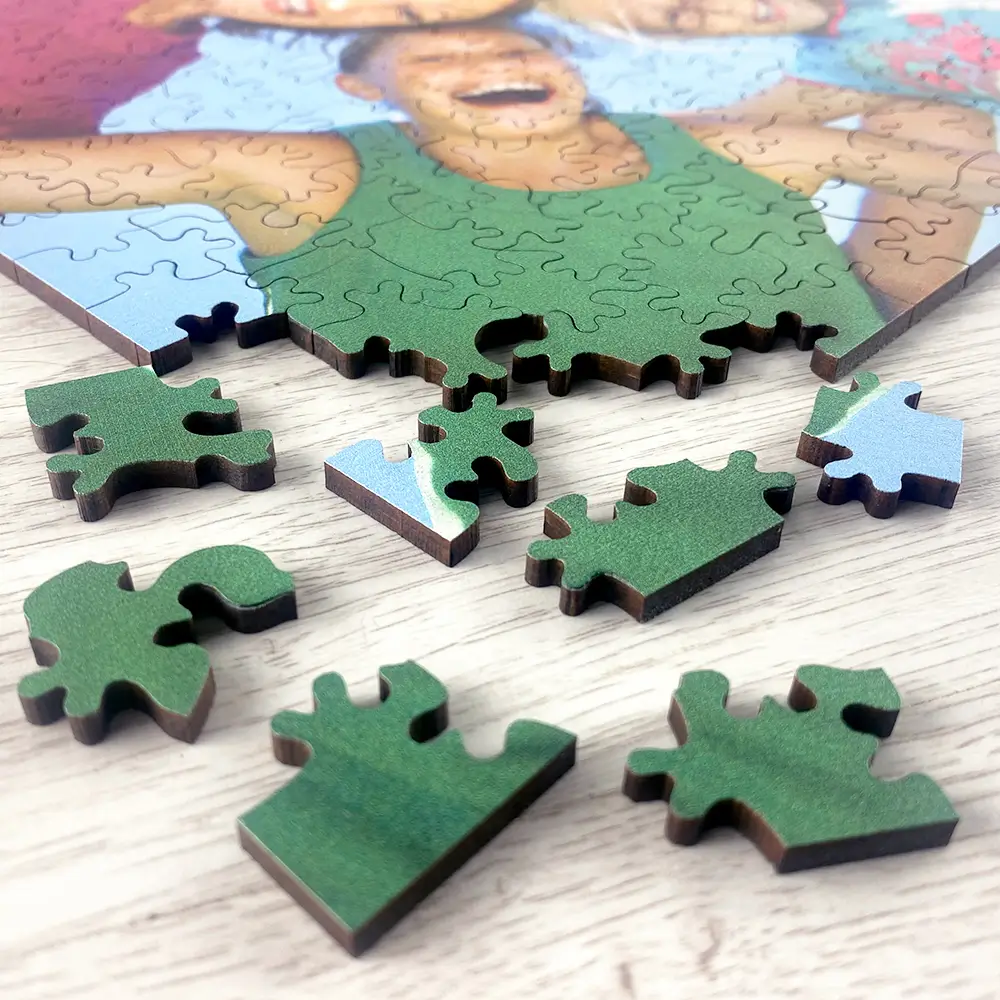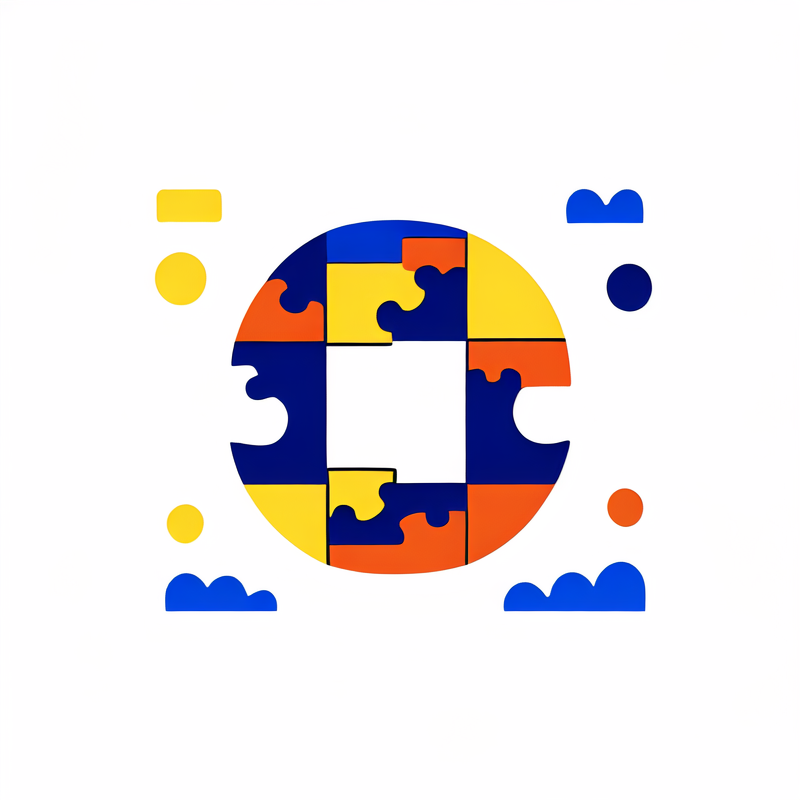The Evolution of Puzzle Design
Puzzles have come a long way in terms of complexity and design. Initially, simple jigsaws and crosswords dominated the puzzle world. Over time, creators pushed boundaries to meet the diverse tastes of puzzlers. The quest for unique puzzles has sparked imaginative and more challenging creations. Today, we see puzzles ranging from intricate mechanical contraptions to mind-bending logic problems.

Early puzzles were often flat and made from wood or cardboard. Advances in technology introduced plastic and metal materials. Now, designers utilize cutting-edge tools to shape puzzles into three-dimensional objects. Some mimic real-world structures, while others form abstract art. Themes have also expanded, drawing from a vast array of topics and interests.
Digitalization has made a massive impact on puzzle evolution. Interactive and digital puzzles now complement traditional styles. They offer different experiences by adding multimedia elements and virtual realities. The shift has brought puzzles to wider audiences, including gamers and tech enthusiasts. As a result, the unique puzzles marketplace has become vibrant and diverse.
The drive for innovation in puzzles continues. New mechanisms and narratives take brain teasers to the next level. There are puzzles with augmented reality features, those that include social aspects, and others designed for educational purposes. The goal remains the same: to challenge minds and provide enjoyment through problem-solving.
Types of Unique Puzzles and Their Characteristics
The world of unique puzzles is vast with each type offering distinct challenges and experiences. Let’s explore several types:
Mechanical Puzzles: These feature moving parts, like the classic Rubik’s Cube. They demand manual dexterity and often, spatial reasoning.
Logic Puzzles: From Sudoku to nonograms, these puzzles require deductive reasoning. They challenge solvers to find patterns and use process-of-elimination techniques.
Word Puzzles: Crosswords and word searches engage language skills. They’re good for vocabulary building and test knowledge of syntax and idioms.
Trivia Puzzles: Often found in quizzes, they test knowledge on various subjects. Solvers recall information and sometimes learn new facts.
Pattern Puzzles: These emphasize shape and color recognition. Solvers piece together mismatches to form a cohesive image or design.
Escape Room Puzzles: They involve a series of puzzles. Solvers use teamwork and creative thinking to progress and ‘escape’ the scenario.
Math Puzzles: Requiring numerical skills, these puzzles have solvers manipulate figures to solve equations or sequences.
Interactive Puzzles: Incorporating technology, they use touch or voice commands. They present novel challenges and often have a multimedia aspect.
Each puzzle type hones different cognitive skills. Some focus on memory, while others enhance problem-solving abilities or pattern recognition. People prefer various types according to their interests and the mental faculties they wish to sharpen.

Benefits of Puzzling on Cognitive Skills
Engaging with unique puzzles is more than just a pastime; it’s a brain workout. Regularly tackling various puzzles can significantly enhance cognitive skills. Here’s how:
Improves Memory: Puzzles can boost both short-term and long-term memory. Remembering shapes, patterns, and solutions reinforces neural pathways.
Enhances Problem-Solving Abilities: Each puzzle is a new challenge. Solvers learn to approach problems in different ways and develop critical thinking skills.
Promotes Spatial Reasoning: Assembling jigsaw puzzles, especially 3D variants, demands an understanding of space and structure. This translates to better spatial awareness in everyday life.
Increases IQ: Studies suggest that regular puzzle solving can lead to higher IQ scores. Puzzles require the use of logic, pattern recognition, and comprehensive thinking.
Improves Concentration: Focusing on solving a puzzle helps improve the ability to concentrate. This increased attention span is useful in all areas of life.
Teaches Patience and Persistence: Puzzles can be complex and time-consuming. Solvers learn the value of persisting, even when solutions seem elusive.
Offers Stress Relief: The act of concentrating on a puzzle can be calming. It offers a break from daily stressors, providing mental relaxation.
Embracing unique puzzles as a part of one’s routine could lead to a sharper mind and a more balanced life. Individuals from all walks of life can benefit from the mental stimulation that puzzles provide. With the diverse range of puzzles available, there’s always a new way to train the brain.

Exploring the World of 3D Puzzles
The world of unique puzzles takes a dramatic turn when we delve into 3D puzzles. These dimensional brain teasers offer a hands-on experience that flat puzzles can’t match. Moving from two to three dimensions, puzzle makers have risen to the challenge of engaging solvers in entirely new ways.
Physical Interaction: 3D puzzles require assembly, often like building models. You have to connect pieces in ways that are both stable and accurate. This not only tests your spatial logic but also your tactile skills.
Real-World Replicas: Many 3D puzzles replicate famous buildings or intricate machines. They invite you to construct miniature Eiffel Towers or complex engines from nothing but interlocking pieces. This offers a satisfying sense of accomplishment once completed.
Educational Value: These puzzles often act as teaching tools. They aid in understanding geometry, architecture, and even history as you build representations of historic landmarks.
Sensory Experience: Unlike traditional puzzles, 3D variants stimulate multiple senses. The feel of the pieces and the visual progress as the structure takes shape deepen the puzzling experience.
Variety of Difficulty: 3D puzzles come in all difficulty levels, from simple block designs for beginners to intricate globes and architectural models for advanced solvers.
Unique puzzles in the form of 3D challenges are reshaping the landscape of mental play. They encourage problem-solvers to think and perceive in new dimensions. As a result, 3D puzzles have carved out a unique niche in the puzzle world, attracting enthusiasts of all ages with their tangible complexity and rewarding engagement.
The Rise of Interactive and Digital Puzzles
The puzzle world is embracing the digital era with enthusiasm and innovation. Interactive and digital puzzles are a growing trend, transforming the tradition of puzzling into a cutting-edge experience. These puzzles integrate technology, offering solvers unique challenges that cannot be found in traditional formats.
Engagement Through Technology: Unlike static puzzles, interactive ones often require solvers to utilize touch screens, voice commands, or even physical actions. This integration of technology offers a more immersive experience, engaging solvers in a dynamic way. It’s not just about thinking; it’s also about interacting.
Enhanced Accessibility: Digital puzzles can be accessed from anywhere at any time, thanks to smartphones and tablets. This ease of access has allowed a broader audience to enjoy puzzling, including those who may not have engaged with physical puzzles before.
Diverse Experiences: From puzzle apps that provide daily challenges to virtual escape rooms, the range of experiences is vast. They can include story-based adventures or use augmented reality to blend the puzzle world with the real one.
Social Connectivity: These puzzles often come with the ability to connect with friends or players from around the world. They can turn a solitary activity into a collective one, fostering community and camaraderie among enthusiasts.
In an era where screens are an integral part of life, interactive and digital unique puzzles represent an evolving genre. They fuse the cognitive benefits of traditional puzzling with the excitement of digital interaction, enriching the act of solving with new layers of complexity and enjoyment.
Crafting Puzzles: Materials and Methods
Crafting unique puzzles involves various materials and methods, each contributing to its uniqueness and appeal. The choice of material can affect the puzzle’s difficulty, durability, and visual appeal. Here are some common materials used in puzzle making:
Wood: Classic and durable, wooden puzzles provide a natural feel and can last for generations.
Plastic: Lightweight and colorful, plastic puzzles are affordable and come in endless shapes.
Metal: Often used for mechanical puzzles, metal adds weight and a sleek look.
Cardboard: For jigsaw puzzles, cardboard is popular due to its cost-effectiveness and ease of cutting.
Aside from materials, the method of crafting puzzles also plays a crucial role in the final product. Precision cutting tools, such as lasers, ensure that jigsaw pieces fit together perfectly. 3D printing allows for the creation of complex shapes and intricate designs that were not possible before. Digital design software enables puzzle creators to experiment with patterns and mechanisms without the need for physical prototypes.
In the realm of digital puzzles, programming and graphic design are key. Developers use code to create challenging algorithms and interactive features. Artists design engaging visuals to accompany these digital brain teasers. This blend of technology and artistry has led to a surge in interactive and digital puzzles that are as entertaining as they are intellectually stimulating.
Whether traditional or high-tech, the process of creating unique puzzles is an art form in itself. It requires a blend of creativity, precision, and sometimes, technological innovation to produce puzzles that captivate the mind.
Puzzle Design Innovators and Their Creations
A few creative minds stand out in the puzzle design landscape. These innovators craft unique puzzles that test our cognitive abilities in new ways.
Oskar van Deventer: Known for his complex mechanical puzzles, Oskar has created the world’s largest Rubik’s Cube. His designs require ingenious spatial reasoning and offer a serious dexterity challenge.
Eric Fuller: Specializing in handcrafted wooden puzzles, Eric’s creations are both artistic and brain-teasing. They often involve intricate locking mechanisms that delight and frustrate in equal measure.
Lily Hevesh: With a talent for domino art, Lily designs spectacular setups that are equal parts puzzle, art, and performance. Her domino creations require precise planning and patience.
Chris Ramsay: Focused on puzzle solving and magic, Chris has developed puzzles that blend physical dexterity with mental challenges. His creations encourage out-of-the-box thinking.
Kagen Sound: Renowned for his secret opening boxes, Kagen combines traditional Japanese woodworking with puzzle making. His boxes require multiple steps to reveal their hidden compartments.
Each of these innovators brings a unique touch to the world of puzzles. Their creations not only challenge us but also inspire wonder and appreciation for the art of puzzle design. Solvers can look forward to experiencing their complex creations, sharpening their minds, and enjoying the profound satisfaction that comes from solving one of these masterpieces.
How to Choose the Right Puzzle for Different Skill Levels
When selecting unique puzzles, consider the skill level of the puzzle solver. Here’s a guide to help you:
- Assess Cognitive Strengths: Identify if they favor logic, spatial reasoning, or physical dexterity.
- Start Simple: Beginners should start with easier puzzles, like simple jigsaws or basic crosswords, and gradually move to harder ones.
- Consider Interest Topics: Choose puzzles related to the solver’s interests to keep engagement high.
- Look at Complexity: Check the number of puzzle pieces and the complexity of the design. More pieces generally mean a higher difficulty level.
- Problem-Solving Style: Some enjoy methodical challenges, while others prefer fast-paced, timed puzzles.
- Review Educational Content: For those looking to learn, select puzzles with educational themes or those that develop specific skills.
- Check for Hints: Puzzles with available hints or levels can help avoid frustration for new puzzle enthusiasts.
- Try Interactive Puzzles: For a tech-savvy solver, interactive or digital puzzles can offer appealing challenges.
Matching the puzzle to the individual’s skill level ensures an enjoyable and rewarding experience. Both novices and experts can find unique puzzles that suit them perfectly, fostering a love for this brain-boosting activity.
